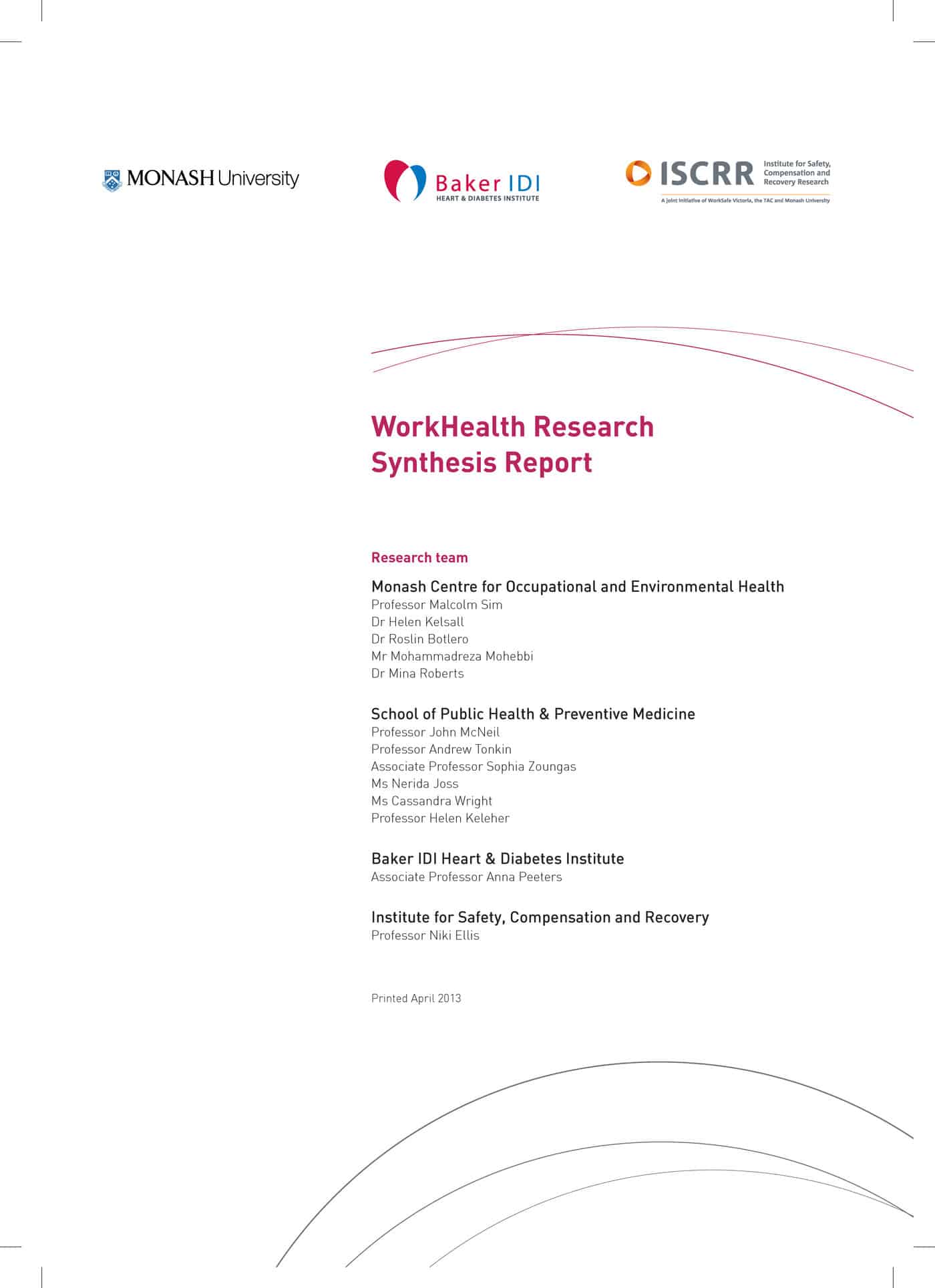Last week the Institute for Safety, Compensation and Recovery Research (ISCRR) released a review of the WorkHealth program. The results are very positive and deserve detailed analysis. However these analyses do not seem to address all the expectations of the Victorian Government when the program was launched several years ago.
 Premier John Brumby said at the launch of WorkHealth that
Premier John Brumby said at the launch of WorkHealth that
“Over time the program is expected to free up $60 million per year in health costs, as well as:
- Cut the proportion of workers at risk of developing chronic disease by 10 per cent;
- Cut workplace injuries and disease by 5 per cent, putting downward pressure on premiums;
- Cut absenteeism by 10 per cent; and
- Boost productivity by $44 million a year.”
One of the key findings of the research seems to meet two of the program’s aims:
“Modelling of outcome forecast goals for a 10% reduction in absenteeism and a 5% reduction in compensable injury rates are likely to be met, especially as health promotion program uptake increases.” (page 5)
It is reasonable to expect from a 4-5 year study of hundreds of thousands of work health checks that hard data be obtained but as the quote above reveals, the researchers needed to apply modelling and draw on research from other sources. Continue reading “WorkHealth raises health awareness but only so far”

 Sloan rehashes some of the April 2012 article including the image of crying public servants but gives prominence to the inconvenience to some companies under the Comcare scheme. Several years ago some national companies opted out of State-based OHS and workers’ compensation schemes in order to join the only national safety scheme that was available at the time. Part of the reason for this move was that it provided national coverage for national businesses. Some complained because Comcare was seen as having a much smaller enforcement team and that the OHS laws were, somehow, less than in many of the States. This option was provided under a Conservative Government to assist business. The same government instigated the OHS harmonisation process.
Sloan rehashes some of the April 2012 article including the image of crying public servants but gives prominence to the inconvenience to some companies under the Comcare scheme. Several years ago some national companies opted out of State-based OHS and workers’ compensation schemes in order to join the only national safety scheme that was available at the time. Part of the reason for this move was that it provided national coverage for national businesses. Some complained because Comcare was seen as having a much smaller enforcement team and that the OHS laws were, somehow, less than in many of the States. This option was provided under a Conservative Government to assist business. The same government instigated the OHS harmonisation process.